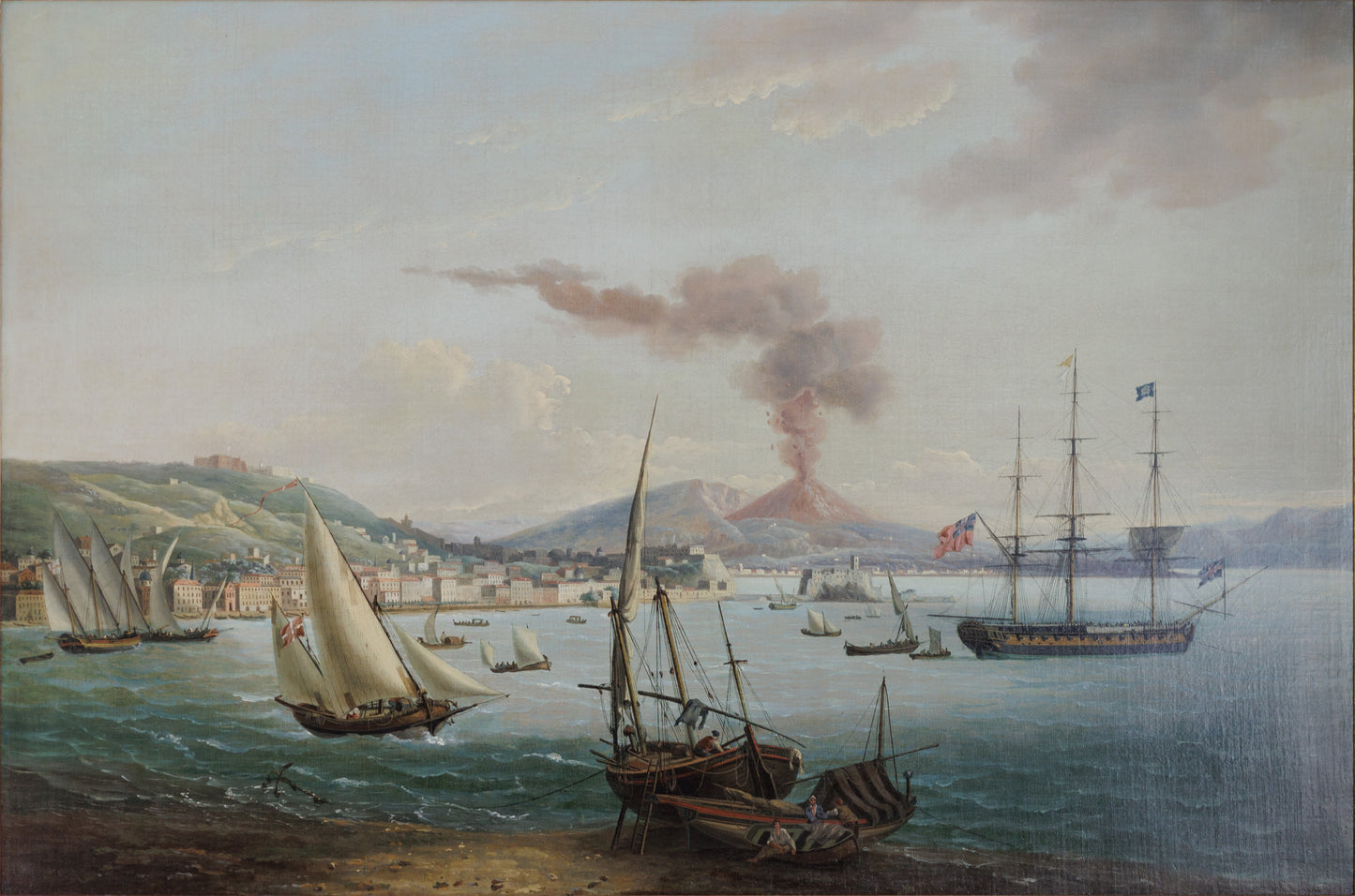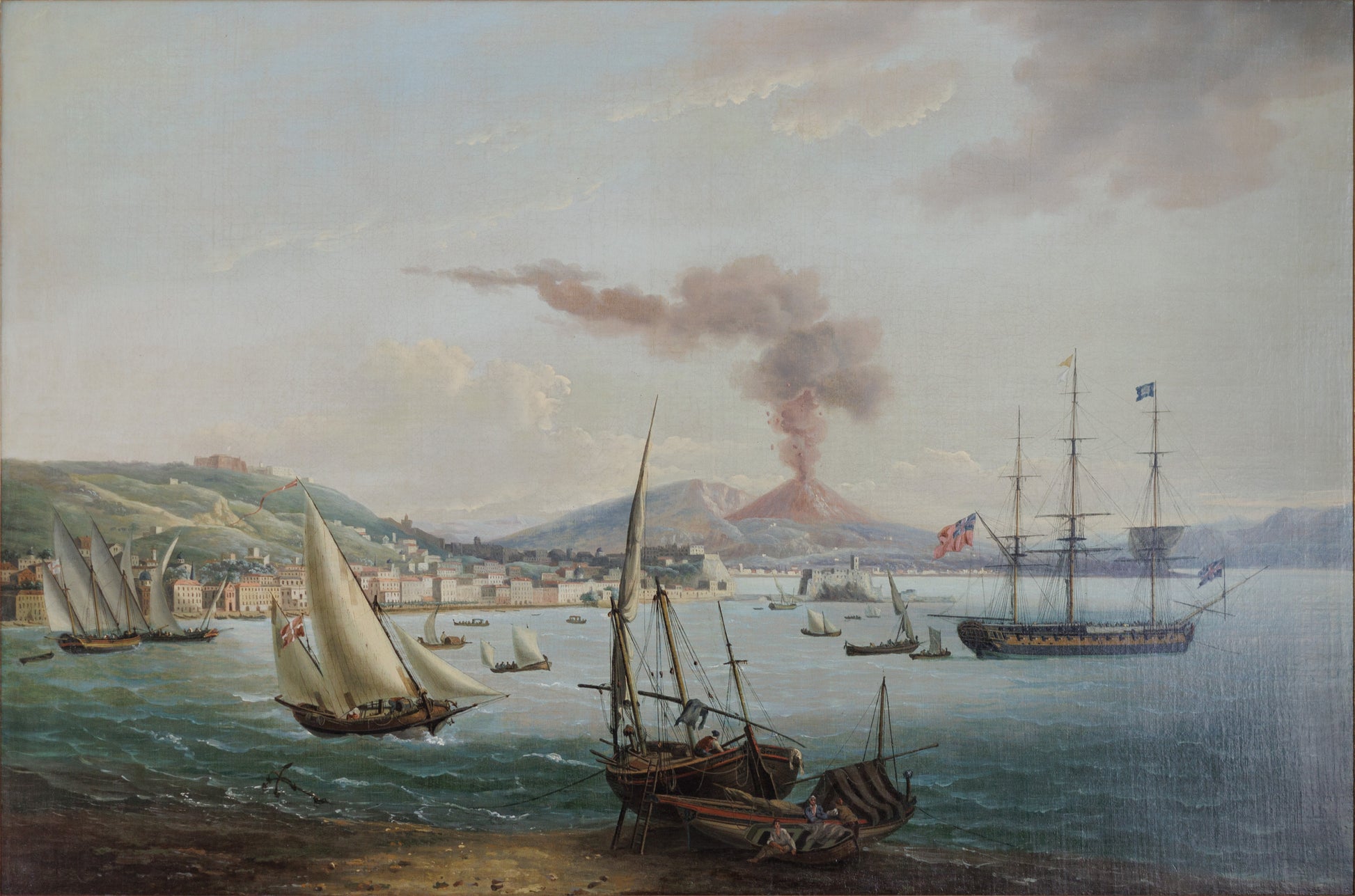Serres, John Thomas (British, 1759-1825). A British Frigate in the Bay of Naples. 1823.
Serres, John Thomas (British, 1759-1825). A British Frigate in the Bay of Naples. 1823.
Couldn't load pickup availability
John Thomas Serres (British, 1759-1825)
A British Frigate in the Bay of Naples
Oil on canvas
Signed and dated "Gio. n i T. Serres /1823" on center boat
32" x 48" canvas, 36" x 52" framed
The golden age of Naples was epitomized through art, culture, science and modernity reaching an apex. Naples enjoyed a period of rapid modernity, an influx of cultural institutions, and critical industrial developments, such as the implementation of the first railroad in Italy. In 1734, Spanish prince, later known as King Charles III, conquered Naples and Sicily to come under rule of the Spanish Bourbons. In remaining steadfast with the eighteenth century theme of “Enlightened absolutism,” the Spanish autocratic ruler sought to modernize Naples, culturally grow the city, as well as create social and political reforms for the city.
When Charles III took the throne to rule both Naples and Sicily, he immediately commissioned artists to paint his portrait, thus leading to a surge in Neapolitan art. Additionally, there were a number of building projects and the restoration of royal residences that led to a cultural flourishing. The city blossomed artistically, economically, and politically under the Bourbon dynasty, especially through the patronage of Charles III. Commissions under Charles III gave way to the development of Naples and the city’s golden age. The Kingdom of Naples comprised all of Italy south of the Papal States, including Sicily. Moreover, Naples proved to be one of the most powerful and alluring European cities at the latter half of the 1700s throughout the early 1800s.
After the Napoleonic Wars, the Kingdom of the Two Sicilies was established in 1816 which consisted of a merger between the Kingdom of Naples and the Kingdom of Sicily under King Charles III. Although Charles III had ruled both Sicily and Naples, they were technically still two separate kingdoms until he merged the two in 1816. Following the unification of Sicily and Naples, Naples became the capital. Therefore, the port of Naples was paramount to the continued success of the Bourbon dynasty. The city’s position in the Mediterranean Sea made Naples a hub for trade, commerce and other maritime activity which is clearly referenced in the painting by Serres. The Spanish Bourbons ruled Naples until 1860, roughly ten years before the unification of Italy in 1871.
A British Frigate in the Bay of Naples, created in 1823, is evocative of the growth and prosperity Naples was experiencing up to and throughout the 1800s. Serres’s view shows an English frigate at anchor in the bay, flying the Blue Peter, indicating that she is ‘ready to depart’. The bay is filled with local small craft, one of which is flying the red and white colours of Malta. Behind the frigate, to the left, is Castel dell’Ovo on its promontory, and further to the left Castel Nuovo, a thirteenth century stronghold rebuilt by the Aragonese conquerors of Naples in the mid-fifteenth century. The buildings of the Old City march up towards the star-shaped Castel Sant’Elmo, which crowns the horizon with the dazzling white complex of the Certosa di San Martino. In the distance Vesuvius is seen erupting.
John Thomas Serres was born 1759 in London and was the eldest son to artist Dominic Serres, the Elder. Serres inherited his father’s position as Marine Painter to King George III in 1793 following his passing. Serres’s work is represented in numerous presitigous institiutional collections including the Royal Collection, London and the Victoria and Albert Museum, London.


